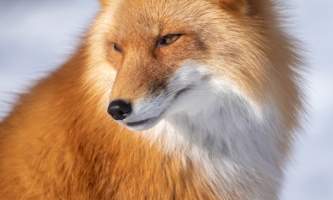Fox
Hi friends! Here we are at the red fox habitat at the Alaska Wildlife Conservation Center. Sometimes when standing around our fox habitat, you may think you’re really looking for a skunk. Don’t fret, this smell is something pretty common around this area of the facility since our fox like to mark their habitat and special items as “theirs!”
Red foxes are widespread and abundant in Alaska. There are no current population estimates, but red foxes’ number in the tens of thousands in the state. They are managed as a furbearer and are a valuable source of income for trappers in rural areas of the state. In order to have healthy populations of foxes for consumptive use, fox habitat must be protected, and foxes must have an adequate prey base. Thus, red foxes can serve as an “umbrella species,” ensuring the conservation of their habitat and numerous other species that live there.
While the classic red color phase is the most common in Alaska, red foxes can be found with a few different colors in the wild. The term “silver fox” refers to black foxes with or without silver-tipped guard hairs. Any combination of red and black or silver is termed a “cross fox.” Red foxes remain the same color year-round, and colors have nothing to do with age or sex of the individual. As in dogs, foxes of different colors can be found in the same litter. You can differentiate a wild red fox from other wild canids by the white-tipped tail and black paws, sometimes referred to as “black socks.”
Red foxes are omnivorous with an emphasis on carnivory. In most parts of Alaska, small rodents such as voles and lemmings are the most important year-round prey. Other food items include grouse, ptarmigan, squirrels, snowshoe hares, salmon, carrion, and berries, but this list is far from exhaustive.


